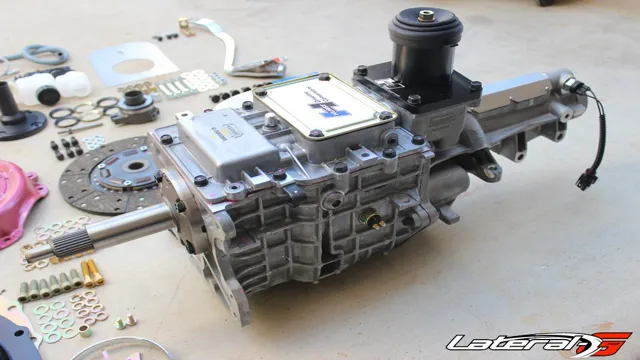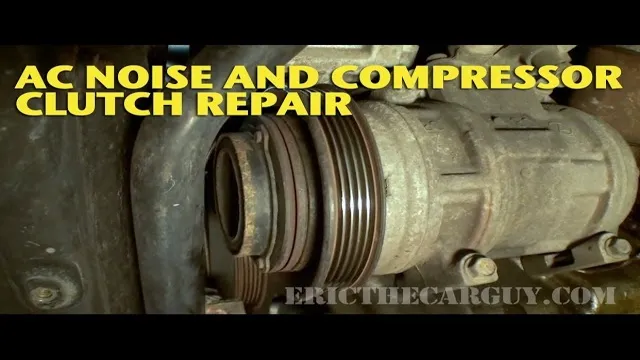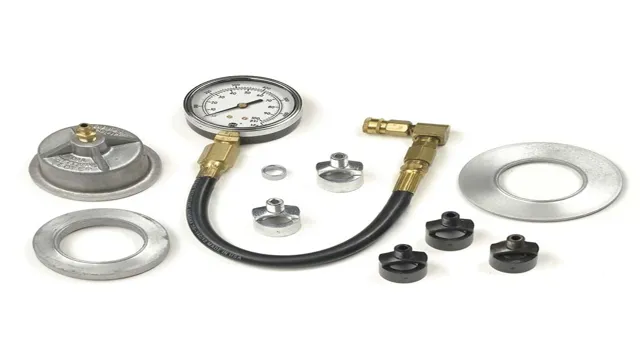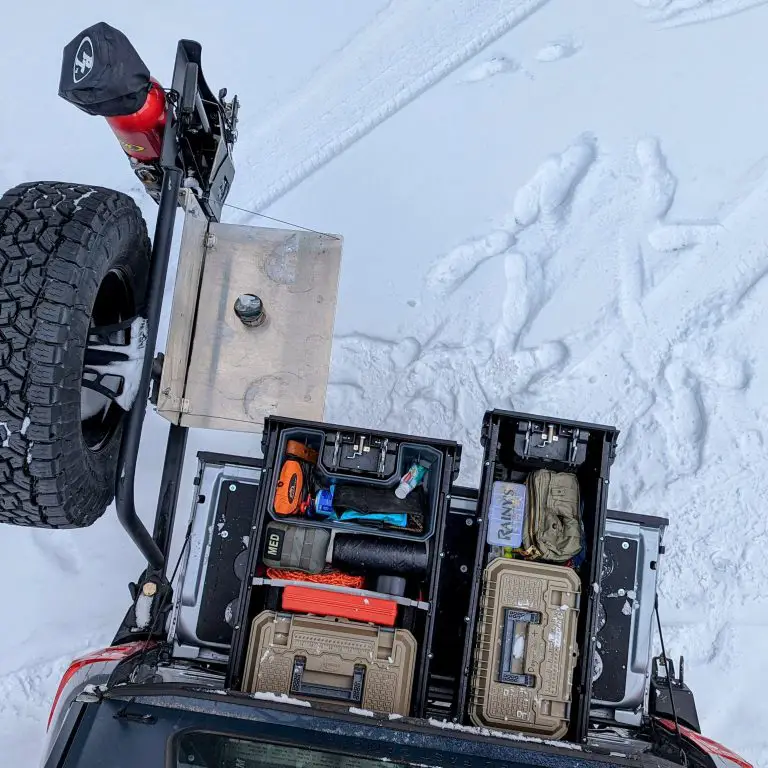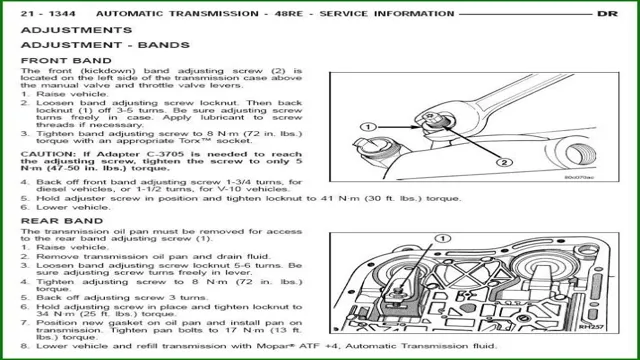Double the Power: A Comprehensive Guide on How to Dually Swap Your Truck
Have you ever dreamed of having the power and capability of a dually truck but still want the convenience of a single rear wheel? Well, with a dually swap, you can have the best of both worlds! A dually swap involves replacing the factory single rear wheel with a set of dual tires, giving your truck more stability and weight capacity. But before you dive into this project, it’s essential to know what you’re getting yourself into. Swapping out your rear wheels takes time, money, and a little bit of experience under the hood.
But don’t worry, our step-by-step guide will lead you through the process, so you can get the job done like a pro! In this article, we’re going to cover everything you need to know about a dually swap, including the benefits, the equipment you need, and the installation process. We’ll also provide tips and tricks to make the installation a breeze, and we’ll answer some of the most frequently asked questions. So buckle up and get ready to learn about transforming your truck’s appearance and performance with a dually swap!
What is a Dually Swap?
If you’re looking to upgrade your truck’s hauling capacity, you may want to consider a dually swap. Essentially, this involves replacing the rear wheels of your truck with dual wheels on either side, which can provide better stability and distribute weight more evenly. However, a dually swap isn’t a simple DIY project and requires some technical knowledge and expertise.
You’ll need to ensure that your truck’s axle can support the extra weight and that the tires and rims you choose are compatible with your truck’s make and model. It’s also important to make sure that you properly balance and align the new wheels to prevent uneven wear and tear. While a dually swap can certainly improve your truck’s performance, it’s important to do your research and seek out a professional mechanic who can handle the job safely and effectively.
Definition of Dually Truck and Swapping
A dually truck is a vehicle that has four wheels on the rear axle, instead of the typical two. It’s designed to carry heavy loads and handle tough terrain, making it a popular choice for those who need to tow large trailers or haul freight. A dually truck swap involves taking a regular truck and replacing its single rear wheels with a new set of dual wheels.
This modification not only gives the truck a more muscular appearance, but it also enhances its stability and towing capacity. Swapping to a dually truck is an effective way to increase the vehicle’s overall performance and is often employed by serious diesel truck enthusiasts. Whether you need a powerful workhorse or just love the look of the extra wheels, a dually swap is an option worth considering.
Benefits and Drawbacks of Dually Swapping
If you’re wondering how to dually swap a truck, there are both benefits and drawbacks to consider before making the decision. Dually swapping involves replacing the single rear wheel setup on a truck with a double rear wheel setup for increased stability and towing capacity. One major benefit is the improved weight distribution and handling that comes with the wider wheelbase.
Additionally, the increased tire surface area provides better traction on slippery surfaces. However, there are some drawbacks to consider as well. Dually swapping can be expensive, and it’s not always a DIY project.
You may also experience a rougher ride due to the stiffer suspension required for the added weight. Finally, parking and maneuvering in tight spaces can be more challenging with the wider rear end. Overall, dually swapping can be a great option for those who regularly tow heavy loads and want to improve the stability and safety of their truck.
However, it’s important to carefully consider both the benefits and drawbacks before making the investment.
Improved Towing Capabilities vs. Higher Maintenance Costs
Dually Swapping When it comes to towing heavy loads, dually trucks are the clear choice. The added stability and weight capacity of dual rear axles make these trucks a popular option for those who require heavy-duty towing capabilities. However, some truck owners find that the added maintenance costs of dually trucks outweigh the benefits.
This is where dually swapping comes in. By swapping out the rear axle of a standard truck for a dually rear axle, owners can enjoy improved towing capabilities without the added maintenance costs associated with owning a full-sized dually truck. While the swap itself may be costly, it can be a cost-effective alternative to purchasing a brand new dually truck.
Before committing to a dually swap, it’s important to research the costs and benefits to ensure it’s the right choice for your towing needs.
Things to Consider Before Swapping
If you’re considering a dually swap for your truck, there are a few things to keep in mind. First, ensure that your truck is compatible with a dually setup. This means checking the weight capacity and axle ratios of your vehicle.
You’ll also want to think about the added weight and size of the dually wheels, which may impact your driving experience. Another important consideration is the cost of the swap. This can vary depending on the type of dually setup you choose and whether you opt for new or used parts.
It’s also important to consider the skills and equipment needed to complete the swap. If you’re not comfortable working on your own vehicle, it’s best to seek professional help. Overall, a dually swap can be a great way to improve the towing and hauling capabilities of your truck, but it’s important to do your research and consider all factors before diving in.
Truck Model, Towing Specifications, and Budget
When it comes to swapping your truck’s towing setup, there are a few important factors to consider before diving into the process. The first thing to think about is your truck model – not all trucks are created equal when it comes to towing capacity, so you’ll want to make sure that your particular model is capable of handling whatever load you plan to pull. Additionally, you’ll want to take a good look at the towing specifications for your specific truck – this will give you an idea of how much weight you can safely pull, as well as any other considerations you’ll need to make (such as trailer brake requirements).
Finally, it’s important to keep your budget in mind when planning any kind of upgrade to your truck. While there are certainly benefits to swapping out your towing equipment for something more heavy-duty, you’ll need to make sure that the upgrade you choose is within your financial means. All of these factors – truck model, towing specs, and budget – should be carefully considered before making any changes to your truck’s towing setup.
By taking the time to weigh your options and make an informed decision, you’ll be able to choose a setup that is safe, effective, and affordable for your particular truck and towing needs.
Step 1: Remove the Rear Axle
When it comes to dually swapping your truck, the first step is to remove the rear axle from your vehicle. This can be a daunting task, but with the right tools and a bit of know-how, it can be done relatively easily. First, make sure that your truck is securely parked on a level surface and that the emergency brake is engaged.
Then, remove the wheels and any brake components that are still attached to the axle. Next, disconnect the driveshaft and any electrical wiring that may be attached to the rear axle. Once everything is disconnected, use a jack to lift the axle off of its mounting points and slowly lower it to the ground.
With the old axle removed, you’re ready to move on to the next step in your dually swap adventure. With these steps, you can successfully replace your rear axle with minimal hassle and effort.
Tools Needed and Safety Precautions
Before we begin removing the rear axle, there are a few tools we’ll need and safety precautions we should take. You will need a socket set, ratchet, jack, jack stands, and a pry bar to remove the axle. Safety should be your top priority when working on any vehicle.
Make sure the car is parked on a flat, level surface and the emergency brake is engaged. Place chocks or blocks behind the front wheels to prevent the car from moving. Before raising the vehicle with the jack, make sure it has been placed in the correct location, which is usually under the rear differential.
Use the jack stands to secure the car in place and prevent it from falling. Wear safety glasses and gloves to protect your hands and eyes from debris and sharp edges. By taking these safety measures and using the right tools for the job, you’ll be well on your way to successfully removing the rear axle.
Step 2: Install the Dual Rear Wheels
If you want to upgrade your truck to a dually, you’ll need to install dual rear wheels. This may seem like a daunting task, but with the right tools and some patience, it can be accomplished. First, you’ll need to remove the single rear wheel and its components.
Once that’s done, you’ll need to install the new hub and brake assemblies for the dual wheels. This will involve attaching the hub and brake components and tightening them to the manufacturer’s specifications. Once this is done, you can put on the new wheels and tighten the lug nuts.
Be sure to check the alignment and suspension to ensure that everything is properly aligned and working correctly. With some careful planning and a little elbow grease, you’ll soon be cruising down the road with a new set of dual rear wheels.
Setting up the Wheels and Attaching the Tires
Now that you’ve attached the front wheels, it’s time for step two – installing the dual rear wheels. First, you need to attach the axle to the frame using the bolts provided. Make sure the axle is in the correct position and level before tightening the bolts.
Then, take the wheel hubs and slide them onto the axle, ensuring they are facing the correct way (outward-facing). Secure them in place with the provided nuts, using a wrench to tighten them. Once secure, attach the tires by aligning the wheel studs with the holes in the hub and pushing the tire onto the studs.
Tighten the lug nuts in a star pattern, ensuring they are each tightened evenly. Don’t forget to check the tire pressure before taking your new ride out for a spin. With the dual rear wheels installed and the tires attached, your vehicle should be ready for some serious adventure.
Step 3: Reinstall the Driveshaft and Brake Lines
Now that the old rear axle has been removed and the new dually axle has been installed, it’s time to reconnect the driveshaft and brake lines. The driveshaft will need to be reinstalled using new U-joints and a new center support bearing if necessary. It’s important to measure and mark the driveshaft before removal to ensure proper reinstallation.
Next, the brake lines will need to be reconnected and bled to remove any air bubbles. It’s important to make sure all connections are tight and properly torqued to avoid any leaks or brake failure. Once everything is reconnected, it’s time to test out the new dually setup.
Hit the road and feel the improvements in stability and hauling capacity! With these simple steps, you can easily dually swap your truck and take on any heavy-duty task with ease.
Reconnecting the Driveshaft and Brake Lines Properly
When you’re reinstalling the driveshaft and brake lines, it’s crucial to do it correctly to avoid any potential hazards on the road. Begin by properly aligning the flange yoke at the rear of the transmission and insert the driveshaft into the yoke. Use a torque wrench to tighten the bolts to the recommended specification.
If applicable, reattach the center support bearing and bracket on the driveshaft. Now, it’s time to reconnect the brake lines. Be sure to match up the correct fittings and gently hand tighten them at first.
Then, use a wrench to firmly tighten each fitting. Afterward, refill the brake fluid and bleed the brakes to ensure proper functionality. Remember, safety should always be a top priority, so take your time and double-check your work before hitting the road again.
With these steps, you can successfully reconnect the driveshaft and brake lines for a smooth and safe ride.
Step 4: Realign the Truck’s Suspension
When it comes to dually swapping your truck, one crucial step is realigning the suspension. The added weight of the extra tires and wheels can throw off the truck’s alignment, leading to a rough ride and premature wear on your tires. To realign the suspension, you’ll need to visit a trusted mechanic or alignment specialist.
They’ll adjust the camber, caster, and toe angles to ensure proper tire contact and proper handling. It’s essential to have this done by a professional as proper alignment is critical to ensure your safety and the longevity of your tires. Don’t overlook this step in the dually swap process, as it’s an important one!
Ensuring Proper Suspension for Optimal Performance
When it comes to achieving optimal performance from your truck, ensuring proper suspension is crucial. And during the process of suspension realignment, there are several key adjustments that need to be made. The first is adjusting the camber angle, which refers to the angle of the wheels in relation to the road surface.
Next, the caster angle needs to be adjusted, which affects the steering axis and helps maintain stability at high speeds. Finally, the toe angle needs to be adjusted, which affects the direction in which the wheels point and aids in steering control. All of these adjustments need to be made in harmony to ensure the truck’s suspension is properly aligned and capable of performing at its best.
So, whether you’re racing or simply driving a vehicle you rely on, make sure you get the suspension realignment right to ensure optimal performance and safety on the road.
Step 5: Test Drive and Maintenance Tips
Now that your truck is successfully converted into a dually, it’s time for a test drive. Before hitting the road, make sure to check the tire pressure, alignment, and lug nut torque. These factors play a crucial role in ensuring the safe operation of your vehicle.
Also, be mindful of the added weight and bulkiness of the dual rear wheels. It may take some time to adjust to the new driving dynamics, so take your first few drives cautiously. Don’t hesitate to experiment with different tire pressures and rear-end gear ratios to find the optimal settings for your driving needs.
Regular maintenance is also essential. Check the wheels’ tightness, and keep the tires well-balanced and rotated every 5,000 miles. By following these simple tips, you can ensure the longevity of your dually truck and enjoy its enhanced performance and stability for years to come.
Check for Proper Alignment and Maintaining Dual Wheels
When you’re all set with the installation of your dual wheels, it’s time to test drive your vehicle and ensure that everything is in proper alignment. Before you hit the road, it’s crucial to check that your dual wheels are maintaining their distance and not touching each other. Doing this will ensure that your tires won’t wear out quickly, and it’ll improve the overall performance of your vehicle.
Besides, it’s essential to follow proper maintenance practices to ensure that your dual wheels remain aligned and trouble-free. Regularly inspecting your tires, keeping them inflated to the recommended pressure, and tightening the lug nuts will ensure the stability of your wheels while driving. Be sure to keep an eye out for any unusual vibrations or noises while driving, as they can indicate a problem with your dual wheels that need immediate attention.
By following these steps, you’ll enjoy a safer and smoother driving experience with your dual wheels.
Conclusion
In conclusion, dual swapping a truck may seem like a daunting task, but with a little bit of know-how and plenty of patience, it can be a rewarding experience that will have you cruising down the road in style. Just remember to take your time, do your research, and never be afraid to ask for help when you need it. And most importantly, don’t forget to show off your newly transformed truck to all of your jealous friends!”
Final Thoughts and Warnings for Dually Swapping
When it comes to dually swapping, it’s essential to take the time to test drive your vehicle thoroughly before hitting the road for a long haul. You want to ensure that both sets of wheels engage the road equally and with no issues. If you notice any inconsistencies or vibrations, it’s essential to address them immediately to avoid any potential safety hazards.
It’s also crucial to maintain your vehicle carefully after the swap to ensure that everything is working correctly. You should regularly check your tires’ pressure, perform routine oil changes, and keep an eye out for any signs of wear and tear. Neglecting your vehicle’s maintenance can lead to costly repairs and, worst case scenario, accidents on the road.
So, take care of your dually swapped ride and enjoy the benefits of enhanced stability and improved towing capabilities on your next adventure!
FAQs
What is dually swap and why is it done in trucks?
Dually swap refers to the process of replacing the stock single wheel set-up with a dual-wheel set-up in a truck. This is done to increase the load-carrying capacity, traction, and stability of the truck.
Can any truck be dually swapped?
Not all trucks can be dually swapped. The ones that can be swapped are those that come with single rear wheels and have enough space in the wheel arches to accommodate the second set of wheels.
How much does it cost to dually swap a truck?
The cost of dually swapping a truck can vary depending on several factors such as the make and model of the truck, the quality of the wheels and tires used, and the labor charges of the mechanic. On average, it can cost around $2,000 to $5,000.
Can dually swapping a truck affect its fuel efficiency?
Yes, dually swapping a truck can affect its fuel efficiency negatively. The additional wheels and tires add extra weight to the truck, which means more fuel consumption. However, this impact is usually offset by the increased load-carrying capacity of the truck.

